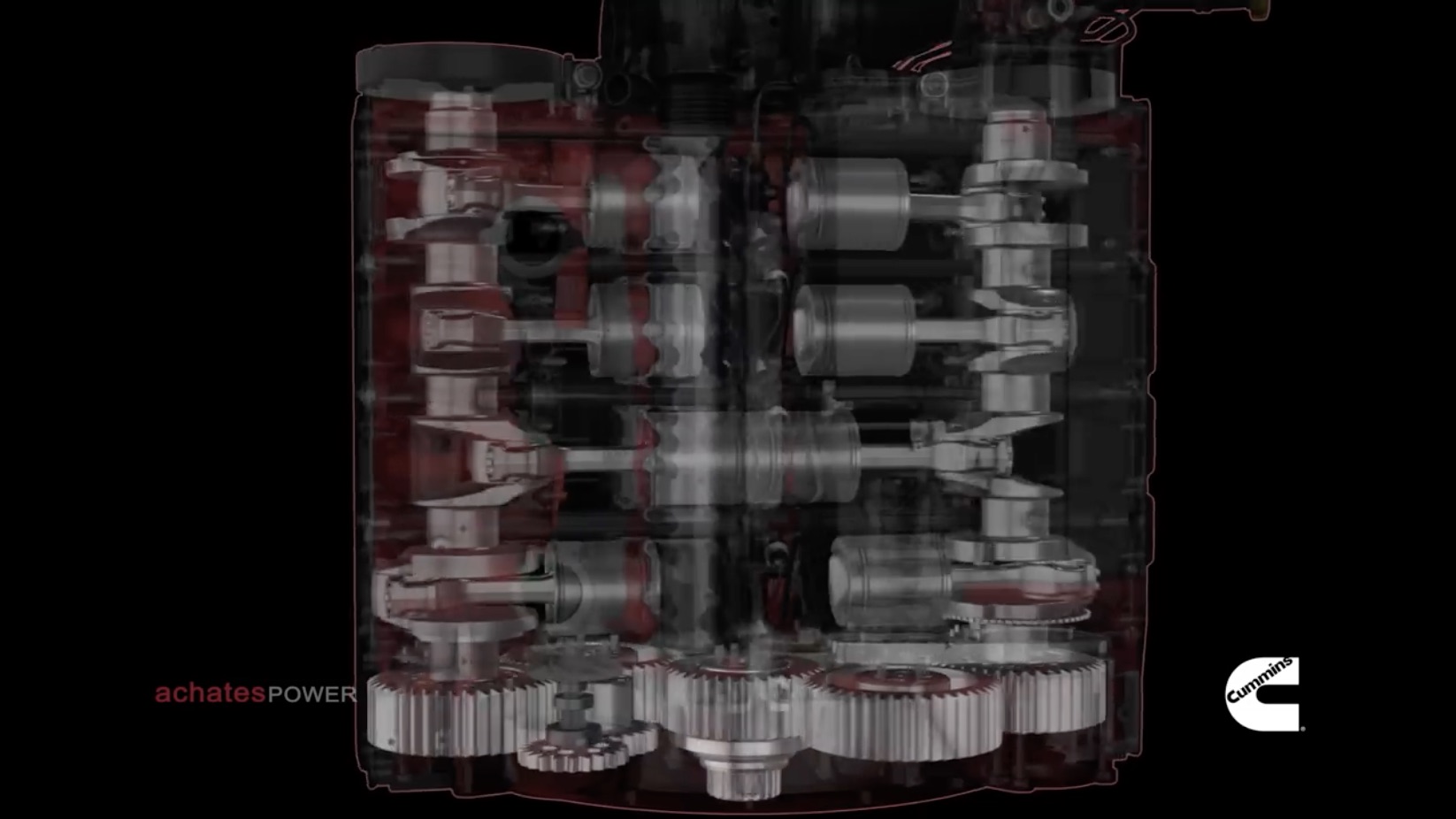Take a look at the lead photo of this article. That is a still from a rendering of the Advanced Combat Engine, a collaborative effort between Cummins and Achates Power that is meant for military use in the future. It’s a 14.7L four-cylinder, eight slug opposed-piston diesel engine that is boosted by two turbochargers and a gear-driven supercharger. It is expected to make over 1,000 horsepower at 2,600 RPM, and is designed to be modular, meaning it can be scaled up or down to meet needs, as required. Need a six-cylinder, twelve-slug unit? Sure. Need a two-cylinder, four slug unit? Okay. It looks like a boxer engine, but instead of the pistons flinging outward while sharing one crankshaft mounted centrally, the opposing-piston engine pairs off two pistons into one cylinder, and they are ignited when the two pistons nearly meet in the middle for compression. Effectively, what you are seeing is a tank engine in development, but could it have any other uses?

Absolutely. Commer, a Rootes Group heavy manufacturer, used an opposed-piston diesel in their trucks and buses called the TS3. A three-cylinder, six piston engine, the 200ci unit used a Roots blower mounted on the front of the engine and driven by a shaft connected to a chain drive at the rear of the engine. Powerful? 105 horsepower, 270 ft/lbs. But, this is an engine that was developed in the early 1950s. It worked back then, and there has been a lot of advancements made since.
Ditching the head, the valvetrain, and condensing the block down to maximize it’s size has pros. Adding the weight of a second crankshaft (or, in the case of Commer’s TS3, a connectiong rod/lever/rod system) has it’s drawbacks. But could it work in today’s world, and if so, how?



























Shoot, this is nothing. Look up the Dyna-Cam engine.
A useful scheme for a 2-stroke diesel because of being able to lead one crank over the other and effectively shift port location within the single created cylinder. But yeah connecting two cranks is always a mess.
A lot of these oddball engine layouts add complexity without adding enough benefit to justify it. Oddly, being a 2 stroke, this looks like it ends up back at about the same parts count you’d get with a normal 4 stroke, and there have been several successful engines that used this layout. And then there’s the Napier Deltic, which has a third crankshaft, running six sets of pistons in a triangle layout. Fascinating to watch an animation of how the pistons move. This may seem to be a case of different for the sake of difference, but it at least manages to not really have anything that immediately says it’s a bad idea, either.
did you ever hear of an air cooled Volkswagen??
They start breating the ehads of from the time you start them Water cooled OK but AC no way
design type were used in many WWII subs – USS Sablefish 303
Keel laid 1943 – scrapped 1971
Propulsion:
4 × Fairbanks-Morse Model 38D8-1⁄8 9-cylinder opposed-piston diesel engines driving electrical generators[3][4]
Fairbanks-Morse built locomotives back in the 50’s that were fairly well regarded for their pulling ability. From what I understand, part of the downfall was the maintenance of them. If you had to access the cylinder on the prime mover it was not a job of simply pulling the head. The entire hood had to be removed and the upper crankshaft and piston/rod assembly had to be lifted out of the top of the block with a shop crane.